The Arctic blast is forecast to hit the West and Midwest next week, bringing temperatures of -50F (78 degrees below normal)
An Arctic blast could bring temperatures of -50 degrees to parts of the West and Midwest next week.
The polar vortex could sweep across the Pacific Northwest and roll into the central and Midwestern parts of the country over the next five to 10 days, meteorologist Ryan Maue said.
Weather forecasts from the National Weather Service's Climate Prediction Center show the cold blast arriving in the central and eastern parts of the US late next week.
The cold shock would bring temperatures more than 78 degrees below normal for this time of year.
Meteorologists have argued that continued warming of the stratosphere over the North Pole could shift the polar vortex and allow cold air to flow into the Lower 48 states.
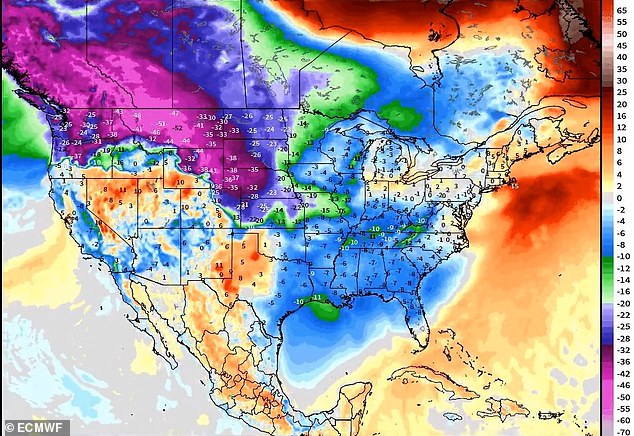
Meteorologists have argued that continued warming of the stratosphere over the North Pole could move the polar vortex and pour cold air into the Lower 48.
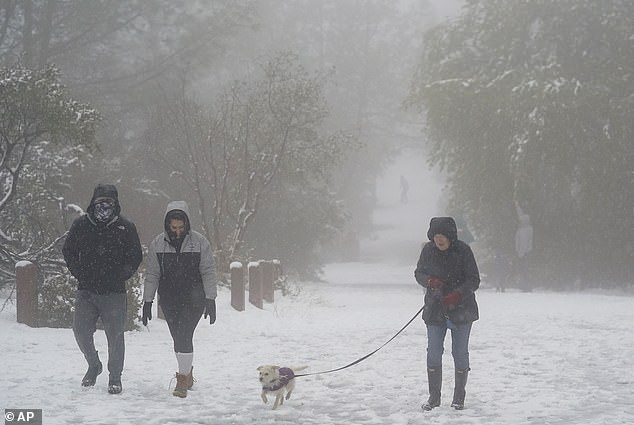

The polar vortex could sweep across the Pacific Northwest and roll into the central and midwest parts of the country over the next five to 10 days. Pictured: Snow conditions in Walnut Creek, California, in February 2023
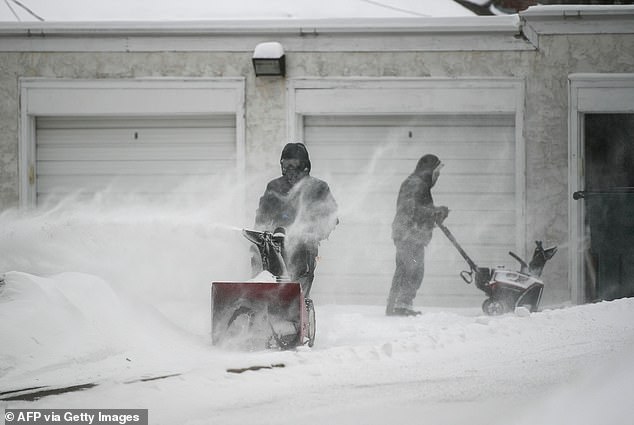

The cold shock would bring temperatures more than 78 degrees below normal for this time of year. Pictured: People work to remove snow from driveways in Minneapolis in February 2023
More precipitation is also expected, which could increase the chance of snowfall.
Model forecasts suggest a ridge to the southeast could block cold air from moving into the western half of the U.S. and Canada. zerohedge reports.
The potential blast has been compared to the cold weather disaster of Storm Uri in February 2021, which left more than 4 million Texans without power for a record 70.5 hours.
That came after 365 generators were taken offline as a result of the storm.
Texas, dependent on its own supply and unprepared for winter conditions, has buckled.
The largest forced blackouts in U.S. history have exposed weaknesses in Texas' unique approach to managing its power grid.
It comes as a massive snowstorm continued to hit the Northeast on Sunday, dumping 18 inches of snow on the Hudson Valley and creating travel chaos on the East Coast.
The area's first major snowfall in two years, affecting about 60 million Americans, is expected to cause travel delays on roads and in the air, according to AccuWeather.
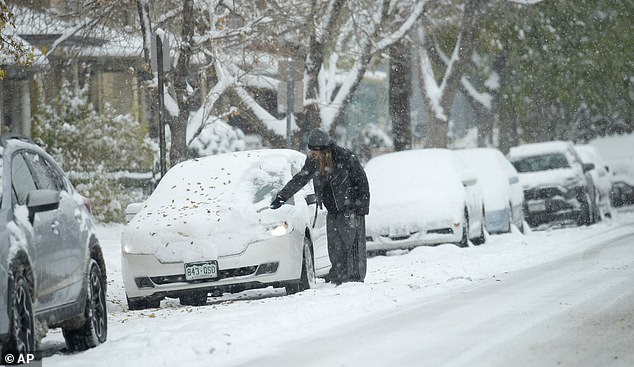

Model forecasts suggest a ridge to the southeast could block cold air from moving into the western half of the U.S. and Canada. Pictured: Snow in Denver in October 2023
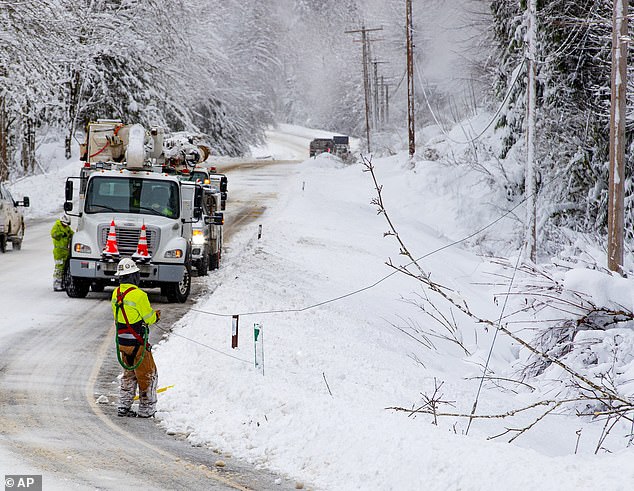

More precipitation is also expected, which could increase the chance of snowfall. Pictured: Snow in Skyomish, Washington, in January 2020


People sleep on couches as they take shelter inside the Gallery Furniture store, which opened its doors and turned it into a warming station after winter weather caused power outages in Houston on Feb. 18
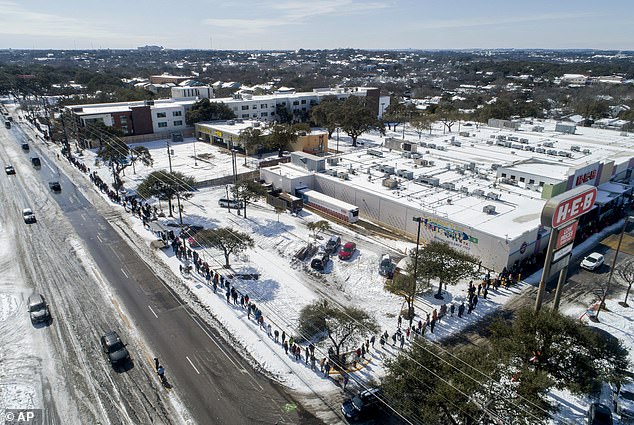

People wait in a long line to buy groceries at HEB in Austin, Texas, during the state's 2021 extreme cold snap and widespread power outage
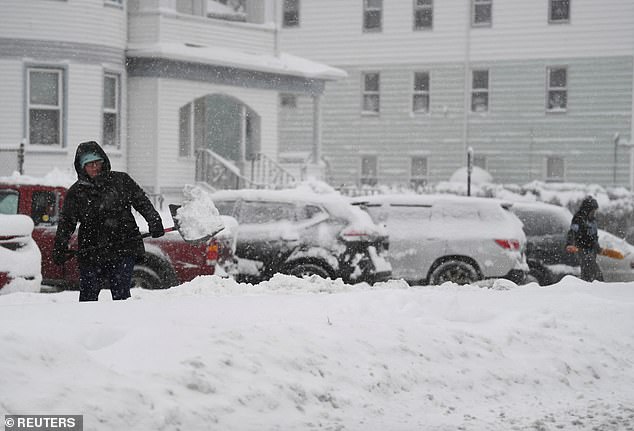

A woman throws snow while shoveling snow in Worcester, Massachusetts, on Sunday
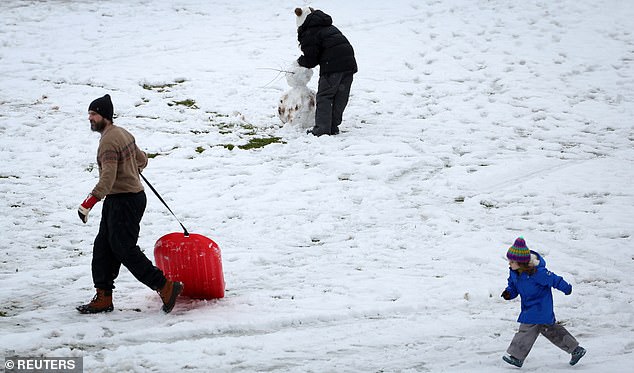

People play in the first snow of the winter season in Nyack, New York on Sunday
New York was hit with more than a foot of snow in parts of Orange County, although New York City's Central Park reported only 0.5 inches of snowfall. This means the Big Apple could go 7 to 692 days without at least an inch of snow, according to ABC.
The National Weather Service reported that 13.1 inches of snow had accumulated in Port Jervis, 12.4 inches in Unionville, 12 inches in Norfolk, 11.8 inches in Middletown, 11.5 inches in Bear Creek and 11 inches in Montgomery.
Boston Logan International Airport canceled at least 164 flights due to the snowstorm, according to Flight Aware. Amtrak announced changes to its train services due to the winter storms.
'Cancellations are expected due to the forecast storm. Passengers are advised to check with their airline regarding the status of their flight before arriving at the airport and to allow additional time to travel to and from the airport,” the Boston Logan reported.
Snow, rain and gusty winds can create hazardous driving conditions and leave motorists stranded on impacted roads.
“Parts of New England, New York State and parts of Pennsylvania will see snow falling at a rate of one inch per hour or more, which could be difficult for highway crews to track,” said chief meteorologist and AccuWeather's chief meteorologist. Senior Vice President, Weather Content and Forecast Operations Jonathan Porter.
The Weather Channel predicts this storm will cause poor travel conditions and could cause power outages due to the combination of heavy, wet snow and high winds.
Massachusetts was hit hard by snowfall as of 10 a.m. Sunday, according to the National Weather Service. Haverhill collected 12 inches of snow, Easthampton saw 11 inches, 10.4 inches of snow was recorded in Granville and 9.9 inches in Fitchburg.
